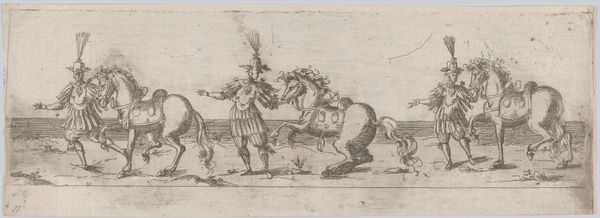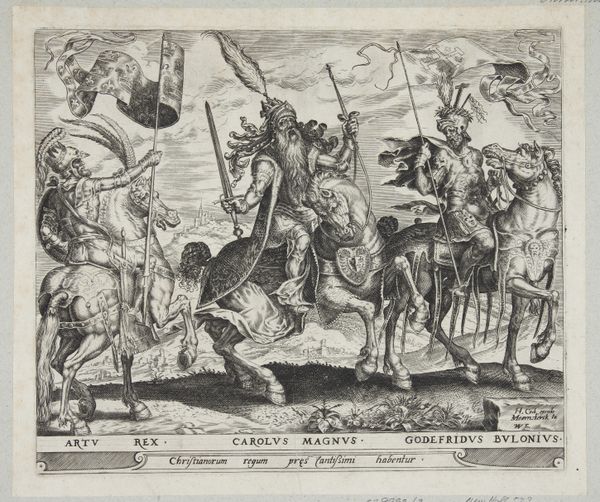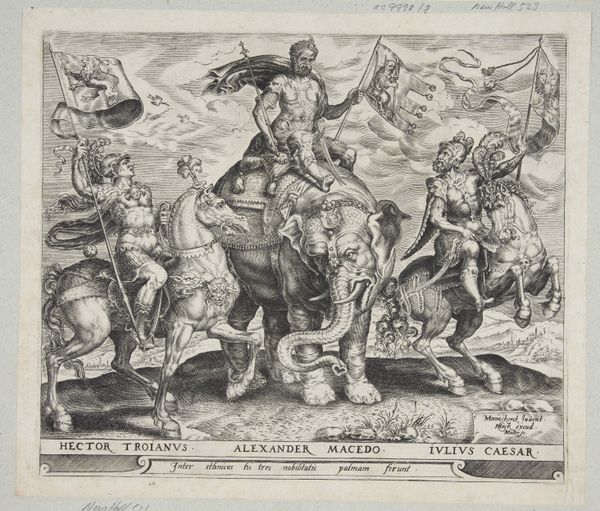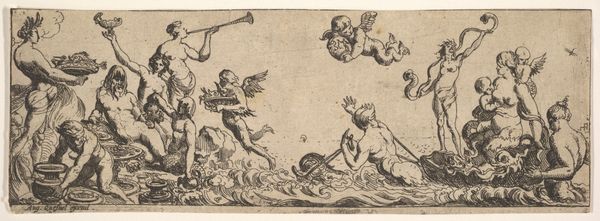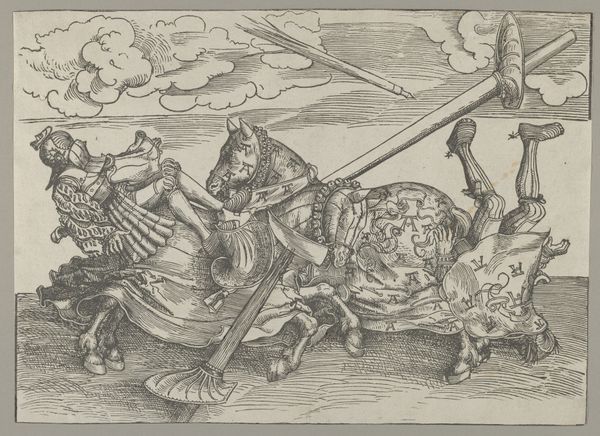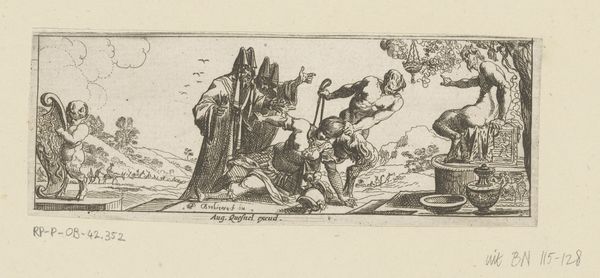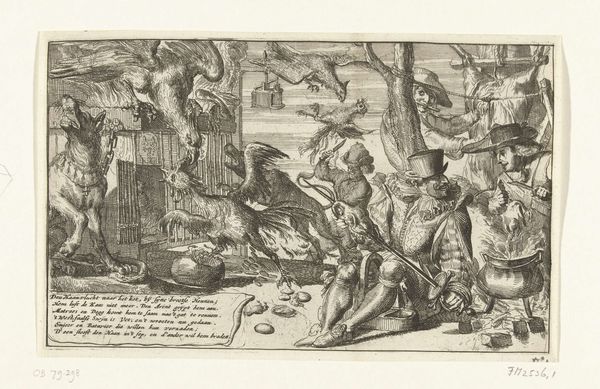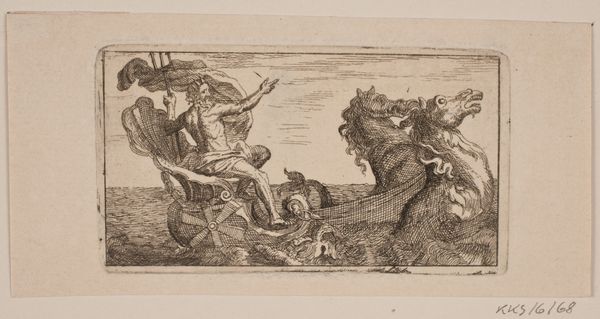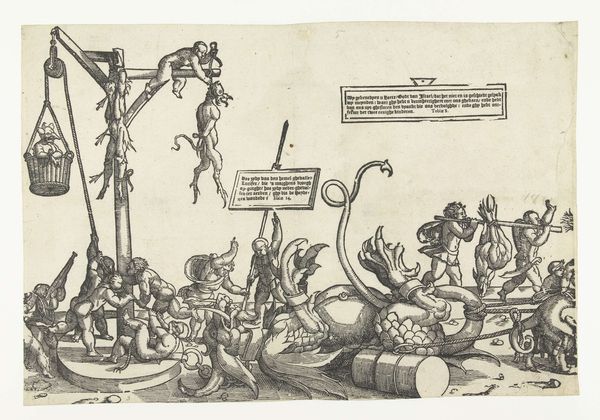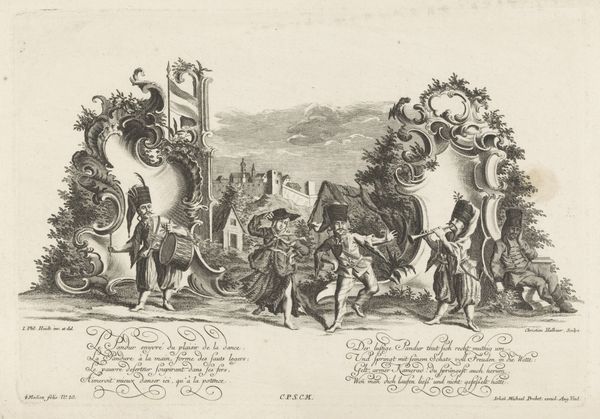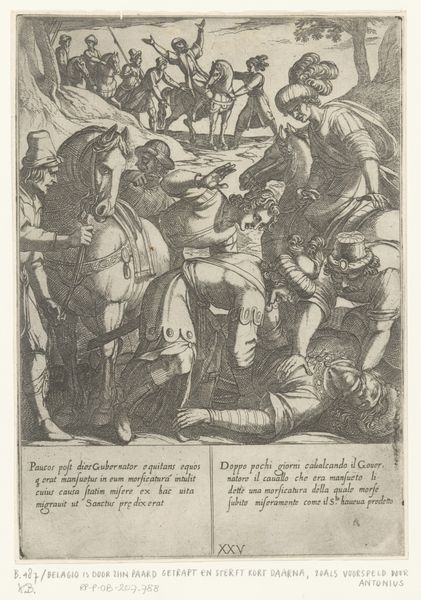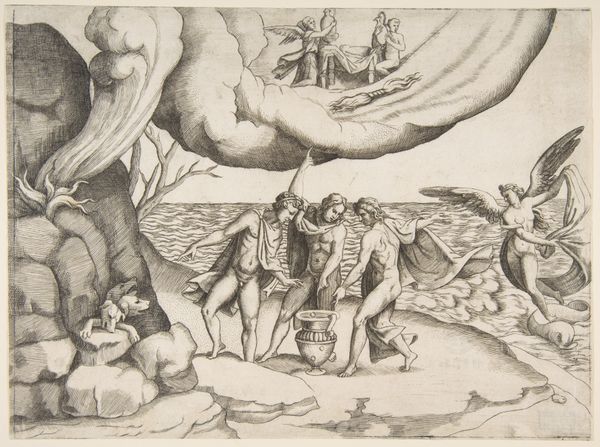
Allegorie met strijd van Tirannie, Woeker en Hypocrisie tegen Verstand, Gerechtigheid en het Woord Gods 1525
0:00
0:00
print, engraving
#
allegory
#
pen drawing
# print
#
pen sketch
#
figuration
#
11_renaissance
#
personal sketchbook
#
sketchwork
#
ink drawing experimentation
#
pen-ink sketch
#
pen work
#
sketchbook drawing
#
history-painting
#
storyboard and sketchbook work
#
northern-renaissance
#
sketchbook art
#
engraving
Dimensions: height 164 mm, width 392 mm
Copyright: Rijks Museum: Open Domain
Editor: This engraving from 1525, titled *Allegory with the struggle of Tyranny, Usury, and Hypocrisy against Reason, Justice, and the Word of God,* is by Peter Flötner. It strikes me as a really busy composition, and the figures are intense. What do you make of it? Curator: Well, this piece is dense, but intentionally so. It’s from a period of immense religious and social upheaval, the early Reformation. Look at how Flötner uses allegory – the personifications of tyranny, usury, and hypocrisy literally trampling figures representing reason and justice. It’s a powerful statement about the forces he saw as oppressing society. How does this blatant imagery read for you, considering our current social and political landscape? Editor: It makes me think about current struggles with misinformation and systemic injustices, like it's history repeating itself. It feels super relevant! Curator: Precisely! And notice how "The Word of God" is included. This work champions scripture against corruption and flawed power structures. It can be read as a condemnation of wealth inequality, a sentiment that persists even today. Do you think this work empowers or demoralizes the viewer? Editor: I think it’s empowering! Seeing these concepts visualized makes the struggle seem real but also something you can fight against. Curator: Exactly. It encourages critical thinking. The print medium itself also makes it a very democratic image because it could reach a much broader audience than a painting for a wealthy patron. It suggests the artist was actively trying to inspire resistance, much like artists today address social inequalities. Editor: That’s fascinating. I never considered the medium itself as a political statement! Thanks for helping me unpack all that! Curator: Of course. Art is rarely created in a vacuum. Thinking about the context reveals the artist's intentions and how the work speaks to us now.
Comments
No comments
Be the first to comment and join the conversation on the ultimate creative platform.
